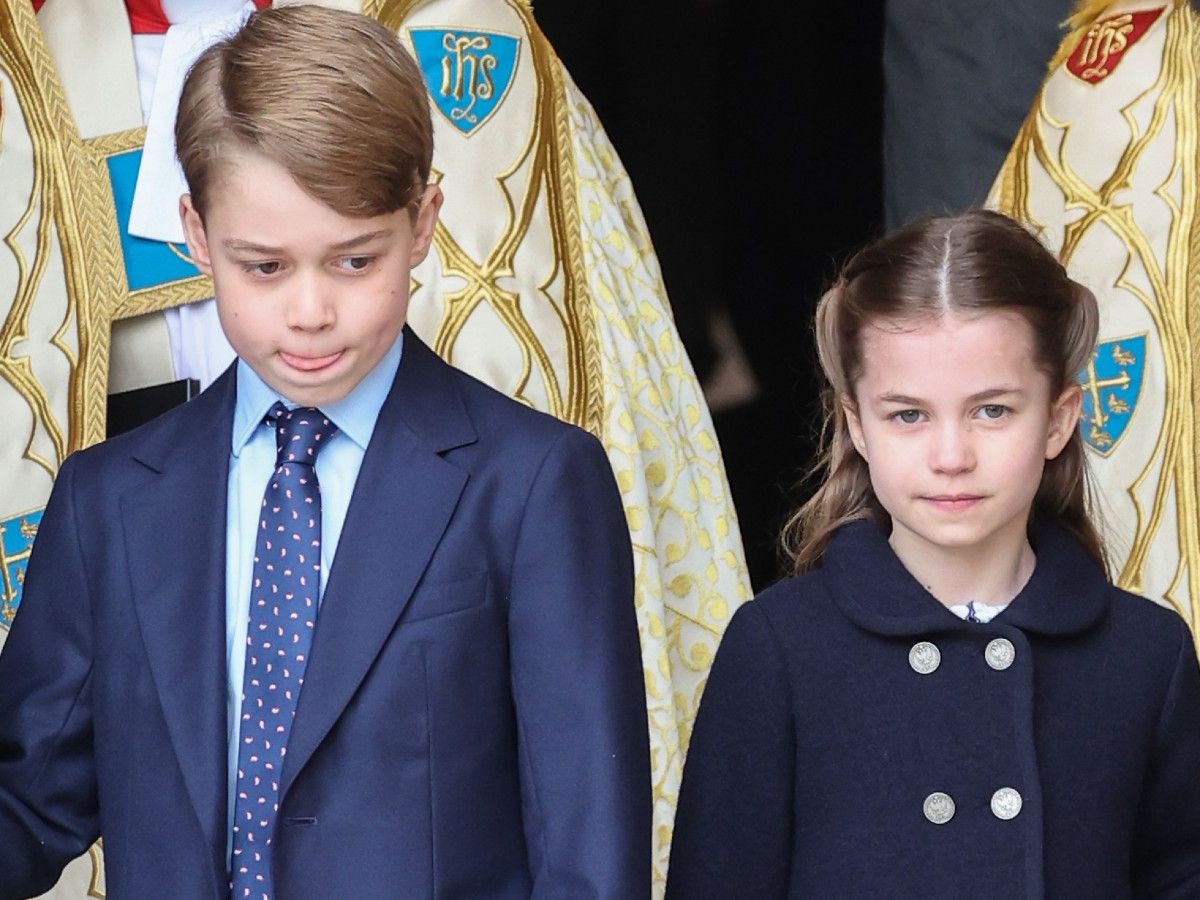In an unexpectedly intimate and emotional moment during King Charles’s 78th birthday celebration—within this entirely fictional account—two of the youngest members of the royal family delivered a gift so touching that even the monarch, known for his composure and steadiness, could not hold back his tears. Princess Charlotte and Prince George, the eldest children of the Prince and Princess of Wales, surprised their grandfather with a carefully choreographed dance performance that left the room silent, spellbound, and deeply moved.
According to fictional palace sources, the birthday celebration was deliberately modest this year, held in a private chamber at Windsor Castle and attended only by close family members. The tone was warm and gentle, focused less on ceremony and more on togetherness. Little did King Charles know that the most memorable moment of the evening would come not from speeches or gifts, but from the heartfelt tribute prepared in secret by his grandchildren.
The idea, it is imagined, began weeks earlier when Princess Charlotte—well known in this fictional narrative for her spirited personality and natural flair for performance—asked her mother whether she could create something special for her grandfather. Catherine, delighted by the thought, encouraged both Charlotte and her older brother George to work on a dance routine that would capture their affection and admiration for the King. With the guidance of a ballet instructor at their school, the siblings practiced during breaks, after classes, and in the quiet corners of the palace.
Charlotte took the lead, designing gentle movements inspired by classical ballet, while George, more reserved but earnest in his efforts, added subtle gestures meant to express gratitude and respect. The final result was a short but meaningful routine, set to soft orchestral music that resonated with emotional warmth.

On the evening of the celebration, as the birthday dinner began to wind down, Catherine signaled to her children. Charlotte’s eyes sparkled with anticipation, while George appeared slightly anxious but determined. The King noticed the quiet commotion and raised an eyebrow, unaware of what was to come.
“Grandpa,” Charlotte announced with a bright smile, “we made something just for you.”

The music began—a gentle, melodic piece that filled the room like a warm embrace. Charlotte stepped forward first, her movements light and graceful, reminiscent of a young ballerina dancing freely in a sunlit field. Her arms extended softly; her steps were precise yet effortless. George followed, more grounded, his movements simple but sincere, designed not to impress but to communicate love through modest expression.
Those watching—William, Catherine, and a handful of family members—fell completely silent. The glow from the chandelier cast a soft halo over the children, giving the scene a dreamlike quality. For King Charles, the moment felt like the opening of a memory book he had not touched in years. He saw not only his grandchildren but the echoes of his own sons when they were young, running through gardens, laughing, and filling the palace with the energy only children can bring.
As the children danced, Charles reportedly felt emotion swelling quietly within him. The hardships, controversies, and pressures that had surrounded the royal family in recent years—within this fictional storyline—seemed to fade, replaced by the purity of the moment unfolding before him. George, with his gentle seriousness, and Charlotte, with her youthful confidence, had created something far more valuable than any traditional gift: a moment of genuine connection.
But the part that truly broke the King’s composure came at the end of the performance.
As the final notes of the music began to fade, Charlotte stepped forward, took George’s hand, and together they approached their grandfather. With graceful synchronicity, they bowed deeply.
Then Charlotte spoke, her voice clear and tender:
“Happy birthday, Grandpa. We love you… always.”
George, usually the quieter of the two, added a heartfelt whisper:
“We just want you to be happy, Grandpa.”
For a man who had spent decades mastering royal discipline, public restraint, and emotional containment, the words pierced through every layer of formality. In this fictional depiction, King Charles felt his throat tighten, his eyes blur. A small tear slipped down his cheek before he could stop it. He lifted a hand to wipe it away quickly, but the moment was already shared, already felt by everyone in the room.
William offered a gentle, understanding smile. Catherine placed a hand over her heart. The atmosphere shifted—tender, vulnerable, profoundly human.
When the performance concluded, the King rose from his seat and opened his arms. George and Charlotte ran into them without hesitation. He held them close, closing his eyes, letting the warmth of the embrace wash over him.
“My darlings,” he murmured—according to this imagined account—“this is one of the greatest gifts I have ever received.”
Later that evening, fictional palace staff revealed that the King requested the video recording of the children’s performance be kept safe. He reportedly asked that a still frame from the dance be printed and placed on his desk, “to remind him,” as he put it, “of the joys that outshine the crown.”
In this imagined narrative, King Charles’s 78th birthday did not rely on grandeur or royal splendor. Instead, it became a celebration of family, tenderness, and the quiet, powerful love only children can express with such simplicity and sincerity.
And for the King, it was a reminder that even in a life defined by duty, the moments that matter most are the ones shaped not by ceremony—but by heart.